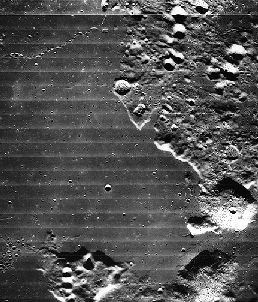The two basic types of regions on the Moon: a smooth, dark mare on the left
and a heavily-cratered, light-colored highland region on the upper right.
NASA.
Lunar Geology
Looking up at the Moon, you can see that there are dark regions and
light regions. With binoculars, you can even see that the dark
regions are smooth compared to the light regions which have many
craters.
Dark regions on the Moon are called maria, which is Latin for
"seas". So Mare Tranquilatis is the "Sea of Tranquility". Apollo
astronauts discovered that these regions are smooth, low-lying plains
with relatively few craters. Maria get their color from a type of
rock (called basalts) similar to the dark colored rocks
formed by lava from volcanoes here on Earth. Basalts are composed of
relatively heavy elements such as iron, manganese, and titanium.
Tests showed these lunar rocks are between 3.1 and 3.8 billion years
old.
Light-colored regions turned out to be hilly regions with many craters
and covered with a type of light-colored rock called
anorthosite. Anorthosite contains relatively lightweight
elements such as calcium and aluminum. This type of rock is found only
in the oldest mountain ranges on the Earth, and geologists have found
that the lunar anorthositic rocks are over 4 billion years old.
Once it was known that the light regions were old and the dark maria
younger, scientists could piece together the Moon's history.
You might also be interested in:
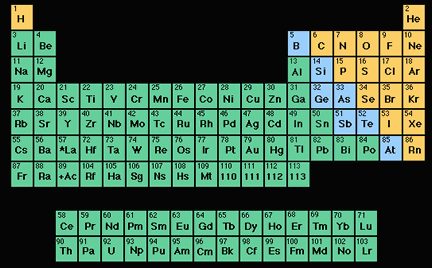
An element (also called a "chemical element") is a substance made up entirely of atoms having the same atomic number; that is, all of the atoms have the same number of protons. Hydrogen, helium, oxygen,
...more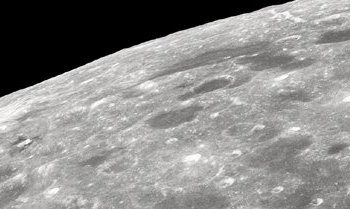
What phase was the Moon in on December, 22 1962? How long does it take the Moon to travel from one phase to the next? Suppose that the Moon spun twice on its axis during each orbit around the Earth. How
...more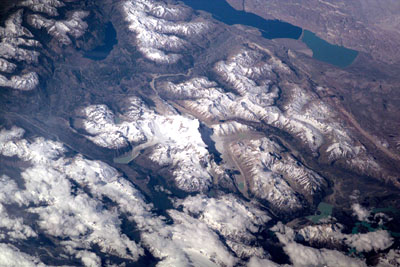
This picture of the Earth surface was taken from high above the planet in the International Space Station. In this view from above, we can see that there are lots of different things that cover the Earth.
...more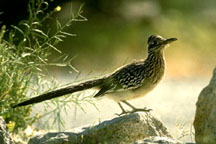
Like the other creatures of the desert, birds come up with interesting ways to survive in the harsh climate. The sandgrouse has special feathers that soak up water. It can then carry the water to its
...more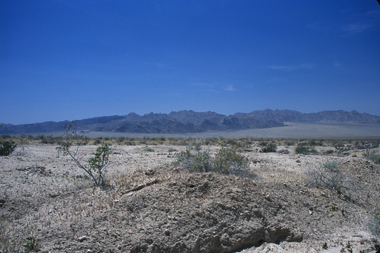
Deserts are full of interesting questions. How can anything survive in a place with hardly any water? Why is it so dry to begin with? You can find at least one desert on every continent except Europe.
...more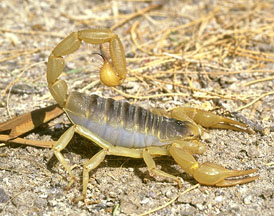
You can find insects almost anywhere in the world. So it should be of no surprise that there are plenty of insects in the desert. One of the most common and destructive pests is the locust. A locust is
...more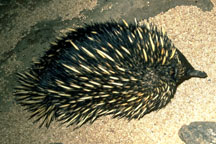
There are several species of mammals in the desert. They range in size from a few inches to several feet in length. Like other desert wildlife, mammals have to find ways to stay cool and drink plenty
...more
